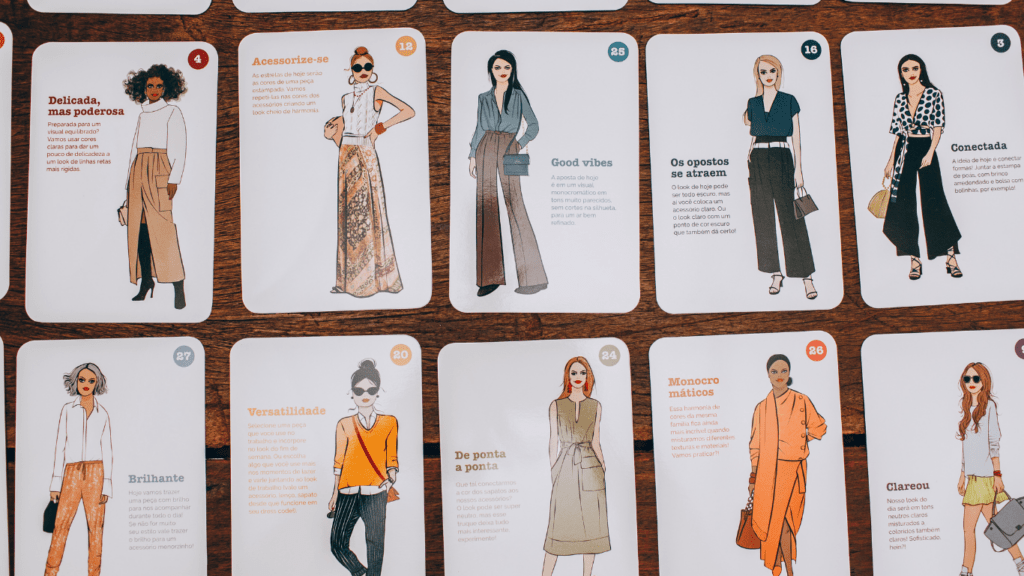The Origins of Sustainable Fashion
Sustainable fashion started gaining traction in the 1960s and 1970s when environmental awareness began rising. Pioneers like Stella McCartney and designers at brands like Patagonia led the way. They focused on using natural materials and reducing waste. Initially seen as fringe movements, these efforts laid the groundwork for today’s broader acceptance of eco-friendly fashion.
Environmental movements in the 20th century played a crucial role in promoting sustainable practices. Eco-conscious consumers started questioning the impact of fast fashion. Reports on pollution, toxic dyes, and exploitative labor practices drew attention to the darker side of the industry.
Technological innovations also pushed the sustainable fashion agenda forward. Advances in materials science introduced organic fabrics and biodegradable textiles. For example, the development of recycled polyester and organic cotton provided alternatives to traditional, heavily polluting options. Brands began experimenting with these materials, slowly gaining traction and setting new standards for the industry.
Celebrity endorsements further boosted sustainable fashion’s profile. Influencers and high-profile figures started promoting eco-friendly brands, making it a sought-after choice for many. Fashion shows and media coverage began to feature sustainable collections, highlighting their viability and appeal.
Key Milestones in Sustainable Fashion
Sustainable fashion’s evolution involves several key milestones. These moments shaped the industry and influenced both brands and consumers.
Early Adopters And Pioneers
Early adopters like Stella McCartney and brands such as Patagonia significantly impacted sustainable fashion. Stella McCartney, launching her brand in 2001, emphasized cruelty-free materials and non-toxic dyes. Patagonia, founded in 1973, integrated environmental responsibility by using recycled polyester and organic cotton. These pioneers set the foundation for future sustainable practices.
Major Campaigns And Movements
Several major campaigns advanced the sustainable fashion movement. The 2013 Rana Plaza collapse in Bangladesh heightened awareness about the dangers of fast fashion. Initiatives like Fashion Revolution, founded that same year, advocate for transparency in the fashion industry. Greenpeace’s “Detox My Fashion” campaign, launched in 2011, challenged brands to eliminate hazardous chemicals from their supply chains. These movements not only informed consumers but also motivated brands to reassess their environmental impact.
Current Trends in Sustainable Fashion
Sustainable fashion continues to grow, with current trends reflecting a strong commitment to ethical practices and innovative solutions. I’ll explore two key areas driving this evolution: ethical sourcing and production, and upcycling and recycling techniques.
Ethical Sourcing and Production
Ethical sourcing and production prioritize fair labor practices and environmentally friendly materials. Brands like:
- Everlane
- Reformation
focus on transparent supply chains, ensuring workers get fair wages and safe working conditions. Organic cotton, Tencel, and hemp replace conventional fabrics, reducing harmful impacts and conserving resources. Certifications like Fair Trade and Global Organic Textile Standard (GOTS) help consumers identify responsibly made products, increasing accountability.
Upcycling and Recycling Techniques
Upcycling and recycling techniques transform waste into new garments, reducing landfill contributions. Companies like Rapanui and Beyond Retro lead with creative methods, turning old clothing into stylish pieces. Technologies such as fabric-to-fabric recycling enable materials to return to the production cycle, minimizing waste. Brands are also adopting closed-loop systems, recycling end-of-life garments into new collections, promoting a circular economy.
The evolution of sustainable fashion involves continuous innovation and dedicated efforts to create a more ethical and environmentally friendly industry.
Challenges Facing Sustainable Fashion Today
Sustainable fashion faces numerous obstacles despite its progress. The industry grapples with economic barriers, consumer behavior, and awareness.
Economic Barriers
High production costs challenge sustainable fashion. Eco-friendly materials often cost more, making ethical brands expensive (e.g., organic cotton or bamboo). Smaller sustainable brands face competition from fast fashion giants with extensive resources. Limited economies scale restrict their ability to reduce costs. Governments offer limited subsidies or incentives for sustainable practices, further increasing financial pressure on small brands.
Consumer Behavior and Awareness
- Consumer behavior presents another challenge.
- Many consumers prioritize affordability over sustainability, limiting market growth for ethical fashion.
- Awareness levels of sustainable fashion benefits vary widely; some individuals remain uninformed about environmental impacts or labor practices in fashion.
- Misleading marketing, or greenwashing, complicates consumers’ ability to identify genuinely sustainable brands.
- Increasing transparency and educating consumers on ethical choices are crucial steps for the industry.
Predictions for the Future of Sustainable Fashion

Sustainable fashion continues to evolve rapidly, driven by innovation and increasing consumer awareness. Key predictions highlight technological advancements and policy changes shaping the industry’s future.
Technological Innovations
- Technological innovations are revolutionizing sustainable fashion. Advanced digital tools are optimizing the design, manufacturing, and supply chain processes. For example, 3D printing enables custom-fit clothing, reducing waste by minimizing excess fabric production. Similarly, AI-driven trend forecasting allows brands to produce items in demand, decreasing unsold stock.
- Biotechnology is transforming materials. Lab-grown textiles like spider silk and mycelium leather offer sustainable alternatives to traditional fabrics. These bio-fabricated materials don’t rely on petrochemicals or extensive land use, significantly reducing environmental impact.
- Smart textiles are becoming prevalent. These fabrics can monitor environmental conditions or health metrics, increasing functionality and lifespan. By embedding technology in clothing, consumers are encouraged to invest in longer-lasting pieces, aligning with sustainability goals.
Policy and Regulatory Changes
Policy and regulatory changes are crucial to driving sustainable practices in fashion. Governments are implementing stricter regulations on waste management and carbon emissions. For instance, the European Union’s Environment Action Program aims to achieve a circular economy, influencing global fashion brands to adopt sustainable practices.
Extended Producer Responsibility (EPR) policies hold brands accountable for the end-of-life management of their products. This encourages the development of recycling programs and the use of recyclable materials. In France, the Anti-Waste Law mandates manufacturers to reuse or recycle unsold goods, reducing landfill waste.
Incentives for sustainable practices are growing. Tax breaks and subsidies for environmentally friendly operations help mitigate high production costs, making sustainable fashion more accessible. By aligning economic incentives with sustainability goals, more brands are likely to adopt eco-friendly measures.
These technological and regulatory advancements are set to shape the sustainable fashion industry, making it crucial for brands to adapt and innovate.



 Senior Fashion & Beauty Writer
Eric Camp, a seasoned writer and fashion expert, lends his sharp eye for trends and beauty to Glam World Walk. With a background in luxury retail and editorial work, Eric dives deep into the latest runway trends, offering readers insightful takes on the intersection of style and culture. His beauty product reviews and fashion industry analyses make him an indispensable part of the team, keeping readers ahead of the curve on all things chic and stylish.
Senior Fashion & Beauty Writer
Eric Camp, a seasoned writer and fashion expert, lends his sharp eye for trends and beauty to Glam World Walk. With a background in luxury retail and editorial work, Eric dives deep into the latest runway trends, offering readers insightful takes on the intersection of style and culture. His beauty product reviews and fashion industry analyses make him an indispensable part of the team, keeping readers ahead of the curve on all things chic and stylish.
